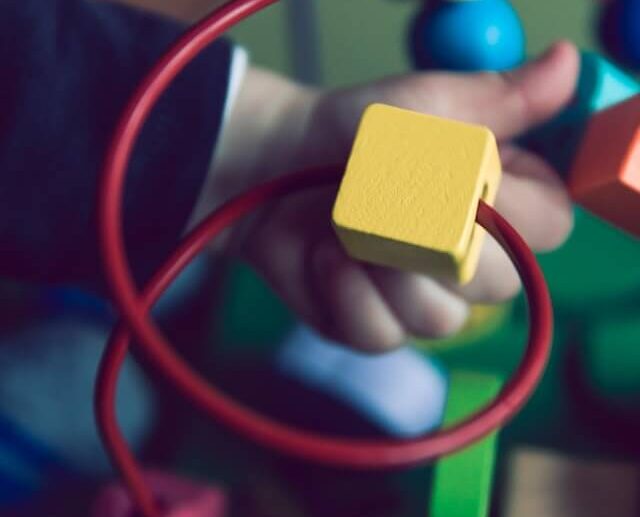
Table of Contents
If you want to learn about how autism impacts children’s physical and motor skills, you’re in the right place.
In this article, we cover the bodily defects that autism causes and how physical therapy can enhance your child’s motor skills, balance, and movement coordination.
What is Autism?
Autism spectrum disorder (ASD) is a neurological condition. ASD also leads to developmental problems among children.
Children with autism typically deal with a range of challenges that influence their social, behavioral, communicative, and physical capabilities.
Physical Challenges of Children with Autism
Children with ASD usually experience delays in developing many skills, among them are their gross and fine motor skills.
Gross Motor Skills
Autism can affect one or more of a child’s following gross motor skills:
- Staying balanced and coordinated while making large bodily movements.
- Moving the arms, legs, and feet.
- Running and jumping.
Why are their gross motor skills not developed?
Children tend to acquire gross motor skills by observing others (namely adults and older children) and mimicking them.
However, autistic boys and girls prefer to keep to themselves and don’t show a lot of interest in interacting with or watching people who are around them.
As a result, they don’t pick up these gross motor skills. The same could be said about their fine motor skills.
Fine Motor Skills
Here are some of the fine motor skills that autistic children commonly struggle with:
- Intricately moving their hands and fingers, such as when they write or draw.
- Being able to perform tasks like tying a knot, scribbling, and feeding oneself.
- Staying coordinated, stable, and reliant on their core strength. For example, children with ASD may run into this challenge when they ride a bike.
Needless to say, the same shortcomings that impact an autistic child’s motor skills also affect their physical abilities.
Physical Issues You May See in Autistic Children
Children with autism generally experience one or more of the following physical difficulties:
- Delays in learning how to walk, skip, jump, and/or run.
- Their moves can be slow and/or unpredictable.
- Reductions in their muscle tones, which can make them clumsy and likely to fall.
- Imperfect coordination.
- Poorly-maintained physical balance.
- They struggle with controlling their body posture.
- Balance problems that prevent them from walking or running in a stable manner.
- They find it difficult to walk on their toes (much more so than neurotypical children).
- In the same vein, going up and down the stairs can be complex for children with autism.
- Deficiencies in eye-hand coordination.
- Limitations at aligning their sensory processes with their bodily movements.
- They struggle when they want to decide on their next physical movements (such as getting up from a chair) or repeat previous ones.
- Challenges that limit their ability to perform movements or tasks in a certain order.
- They have a hard time emulating others’ actions and behaviors.
- Children with autism might develop fine motor skills and activities (including writing and drawing) at a later stage than their neurotypical counterparts.
With that being said, many of these ASD-induced barriers can be minimized and managed through physical therapy.
How can physical therapy help those with autism?
Physical therapy revolves around helping people with various medical conditions regain or acquire movement, balance, and coordination capabilities.
This can be especially advantageous to children with ASD, particularly when they get treated by a physical therapist’s work who focuses on patients with autism.
What is a physical therapist?
Simply put, physical therapists are medical professionals who are trained at diagnosing and handling medical conditions that impact a person’s bodily movements and makes it difficult for them to perform day-to-day tasks.
There are many physical therapists who particularly specialize in treating autism-related physical issues.
How does it work?
When you take your autistic son or daughter to a physical therapist, here is what you can expect the process to look like:
- The physical therapist conducts an evaluation, examines your child’s motor skills, and identifies developmental delays.
- They put together a custom treatment program that suits your child’s personal needs.
- The therapist starts your child’s treatment program, which might include exercise therapy, one-on-one sessions, and/or group therapy.
Alongside physical therapy, there are additional treatment methods that could enhance your autistic boy or girl’s motor skills.
Other Types of Therapies Offered by Physical Therapists
Physical therapy sessions may be conducted alongside certain forms of therapies that help children with autism with improving their motor skills.
The following are a few of the most prevalent types:
- Dance and Movement Therapy
- Hippotherapy
- Music Therapy
- Play Therapy
- Recreational Therapy
Both physical and other types of therapy sessions will entail similar activities that can strengthen an autistic patient’s motor capabilities.
What To Expect During a Therapy Session
At a typical session, you can expect to see gym balls, swings, slides, and physically-engaging objects.
Meanwhile, here are some of the exercises that your autistic son or daughter might participate in:
- Catching: For example, your child may catch a ball or frisbee.
- Clapping
- Jumping: This could be jumping as part of a hoop course or to catch/throw a ball.
- Kicking
- Skipping: Playing skipping rope, for instance, can assist your child with developing new balance and coordination capabilities.
- Throwing
How long does a physical therapy session last?
The length of a physical therapy session depends on your son or daughter’s age.
For younger children, sessions are generally 20 to 30-minutes long. Older children, on the other hand, could spend up to an hour with the therapist.
This is because boys and girls in different age groups are treated through specific forms of exercises and activities.
Physical Therapy: From Baby to Adult
Here is what physical therapy entails based on your child’s age:
Birth to Age 3
Physical therapy for ASD patients who are 3 years old or younger is centered around basic motor skills. For instance, the therapist may show them how to roll, sit, stand, and run.
Most of these activities are done in a fun and engaging way.
Ages 3 to 18
From the time they turn 3 years old and up until they become an adult, an autistic child’s physical therapy sessions start to pivot towards more advanced motor skills.
Examples include skipping and kicking, catching, and throwing balls.
18 Years and Older
After they reach their 18th birthday, an ASD patient’s physical therapy sessions will revolve around giving them the tools that they need to live as independently as possible.
Notably, the frequency of your son or daughter’s sessions is equally as important as their length.
How often should a child get physical therapy?
How often your child attends physical therapy is based on the program that they’re enrolled in.
- Individual Family Service Plan (IFSP)/Individualized Education Program (IEP): These sessions are provided by the education system (i.e. your child’s school). Their frequency is determined by the IFSP or IEP team that works with your autistic boy or girl.
- Clinical Settings: Here, the child’s primary care physician, their therapist, and you (their parent or caretaker) decide on the recurrence and length of the sessions. Another factor to consider in clinical settings is the number of physical therapy hours that your insurance will cover (and whether you can afford to pay out of pocket for the uncovered time).
Before you enroll your autistic son or daughter in a physical therapy program, consider researching the different providers that are in your area and learning about the services that they offer.
The Best Physical Therapists in New Jersey for Autistic Children
The following are five of the best physical therapists in the Garden State:
1. Maywood Physical Therapy and Rehab Center
- Address: 119 E. Passaic St, Maywood, NJ 07607
- Phone Number: (201) 880-7787
2. InHome Pediatrics
- Address: 6 Alexander Ct, Jersey City, NJ 07305
- Phone Number: (201) 401-0702
3.Liberty Physical Therapy
- Address 1: 115 Christopher Columbus Dr, Ste 300, Jersey City, NJ 07302
- Phone Number 1: (201) 366-1115
- Address 2: 132 Newark Ave (Pedestrian Plaza), Jersey City, NJ 07302
- Phone Number 2: (201) 366-1116
- Address 3: 2 Journal Square (Opp. JSQ Path Station), Jersey City, NJ 07306
- Phone Number 3: (201) 366-1120
4. Child PT
- Address: 575 NJ-28 Building 1, Ste 204A, Raritan, NJ 08869
- Phone Number: (908) 543-4390
5. Cardinal Children Therapy
- Address: 825 NJ-73, Ste g, Marlton, NJ 08053
- Phone Number: (856) 435-6023
As you study your options, you should keep your autistic son or daughter’s unique personal challenges in mind. Finding a therapist who’s covered by your insurance plan is also crucial.
In turn, this allows you to identify a therapist who is trained to help them improve motor skills, balance and coordination, and other abilities based on their age, needs, and desires.
If you are ready to work with the best ABA therapy provider in New York, New Jersey or Indiana, give us a call at (732) 402-0297. Our dedicated team is ready to help and we will treat you like family.
- Autism Routine Disruption in Adults: Coping Tips - July 16, 2024
- Autism and Obsession: An Overview - July 16, 2024
- Autism and Taking Clothes Off: Management Tips - July 16, 2024



